Solar Battery Prices: Are Home Batteries Finally Worth It?
Last Updated: 3rd Nov 2025 By Finn Peacock, Chartered Electrical Engineer, Fact Checked By Ronald Brakels

For many Aussies, solar batteries have long been a smart idea in theory, but financially frustrating in practice. That’s changing with the federal battery rebate dropping prices 30-40%.
The price you’ll pay for a battery with the rebate depends on whether you are:
- installing a solar + battery system from scratch,
- adding a battery to an existing solar setup with a hybrid inverter,
- or retrofitting one where a new battery inverter is needed,
In this guide, I break down the real costs, explain which rebates are available and how they affect your payback.
Solar Battery Prices in Australia: What You Can Expect to Pay
Typical installed prices for popular solar batteries in Australia:
| Battery | Battery System | Usable Capacity | Approx. Installed Cost (excl. federal rebate) | Approx. Installed Cost (incl. federal rebate) |
|---|---|---|---|---|

| 13.5 kWh | $16,100 | $11,650 (=$860/kWh) | |
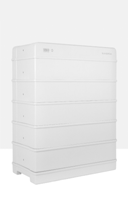
| 12.8 kWh | $12,500 | $8,270 (=$646/kWh) | |

| 13 kWh | $14,500 | $10,210 (=$785/kWh) | |

| 10 kWh | $14,600 | $11,270 (=$1,127/kWh) | |

| 13.8 kWh | $13,600 | $9,046 (=$655/kWh) | |

| 13.3 kWh | $12,372 | $7,983 (=$600/kWh) | |

| 9.7 kWh | $13,400 | $10,200 (=$1,050/kWh) | |
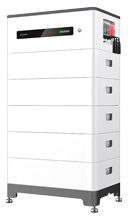
| 12.8 kWh | $11,100 | $6,876 (=$537/kWh) |
I’ve assumed $3,000 for a good-quality, straightforward installation:
- the battery is installed next to the switchboard
- no protection bollards required
- only two backup circuits
- no switchboard upgrades
- no fire-resistant backing required.
Caution: If you receive a jaw-droppingly low quote compared to these prices, be very careful. You are likely looking at an el-cheapo brand, with a rushed installation and horrible customer service if you ever need to reconfigure the battery to deal with new electricity tariffs.
Table of Contents
- Solar Battery Prices in Australia: What You Can Expect to Pay
- What Affects The Cost Of A Home Battery System?
- There Are 3 Kinds of Battery Buyers: Which One Are You?
- Battery Payback: Can They Actually Pay for Themselves?
- How Much Will Battery Rebates Cover?
- What Affects The Battery Price?
- What Affects the Battery Inverter Price?
- What Affects Battery Installation Cost?
- Financing Your Battery Purchase
- Wrapping Up: Solar Battery Prices in Australia
What Affects The Cost Of A Home Battery System?
What you pay for a home battery system is the sum of the:
- Battery price
- Battery inverter price (if not already installed — usually a hybrid inverter, AC-coupled battery inverters are rarely quoted anymore)
- Installation cost
- Finance cost (if applicable)
- Rebates: the federal battery rebate and any applicable state or territory rebate.
And if you want to charge the battery from solar – you, of course, need solar panels too.
There Are 3 Kinds of Battery Buyers: Which One Are You?
To get an accurate picture of what a battery will really cost you, you first need to figure out which of these three buyers you are:
| Cost Component | Buyer #1: New Solar + Battery | Buyer #2: Battery Only (Hybrid Inverter Already Installed) | Buyer #3: Battery Only (No Hybrid Inverter) |
|---|---|---|---|
| Battery | ✅ | ✅ | ✅ |
| Hybrid Inverter | ✅ (shared with solar) | ❌ (already installed) | ✅ (must buy one or use AC-coupled) |
| Installation | ✅ (lowest) | ✅ (simple) | ✅ (can be higher) |
| Solar Panels | ✅ (required) | ❌ (already installed) | ❌ (already installed) |
| Federal Battery Rebate | ✅ | ✅ | ✅ |
Buyer #1: You’re Installing Solar and a Battery at the Same Time
- Only one inverter required (it’s called a hybrid inverter and handles solar + battery) – shared cost.
- Installation is bundled (lower labour and wiring expenses).
- Qualify for both solar and battery rebates in one go.

Buyer #2: You Already Have a Hybrid Inverter Installed
- Plug a new battery into your existing inverter — no extra inverter cost.
- Installation is quicker and cheaper (no inverter swapping).
- Still eligible for federal and state/territory rebates.

Buyer #3: You Have Solar, But Not a Hybrid Inverter
- Must either replace your existing inverter with a hybrid model (~$2,200+) or buy a battery with a built-in inverter (e.g. Tesla Powerwall 3, Sigenstor, AlphaESS)
- Installation complexity (possible rewiring, switchboard changes) drives up costs.
- Eligible for federal and state rebates but upfront spending is highest on this path.
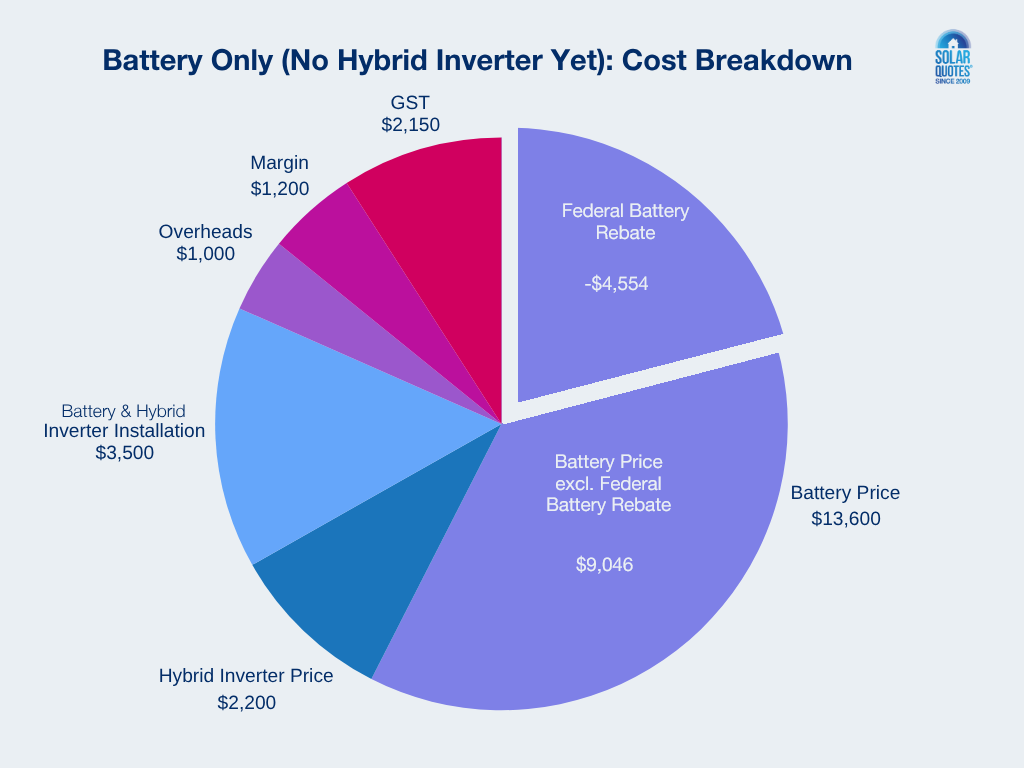
Pro-Tip: You don’t need to charge your battery from solar panels. Charging from panels provides a savings advantage, but you can charge it from off-peak grid electricity instead. Or from a mix of solar and grid. You can now get super off-peak tariffs in WA and SA as low as 8c per kWh. You can even get plans that offer periods of free electricity during the day. However, your battery must be connected to solar to be eligible for the federal battery rebate.
Battery Payback: Can They Pay for Themselves?
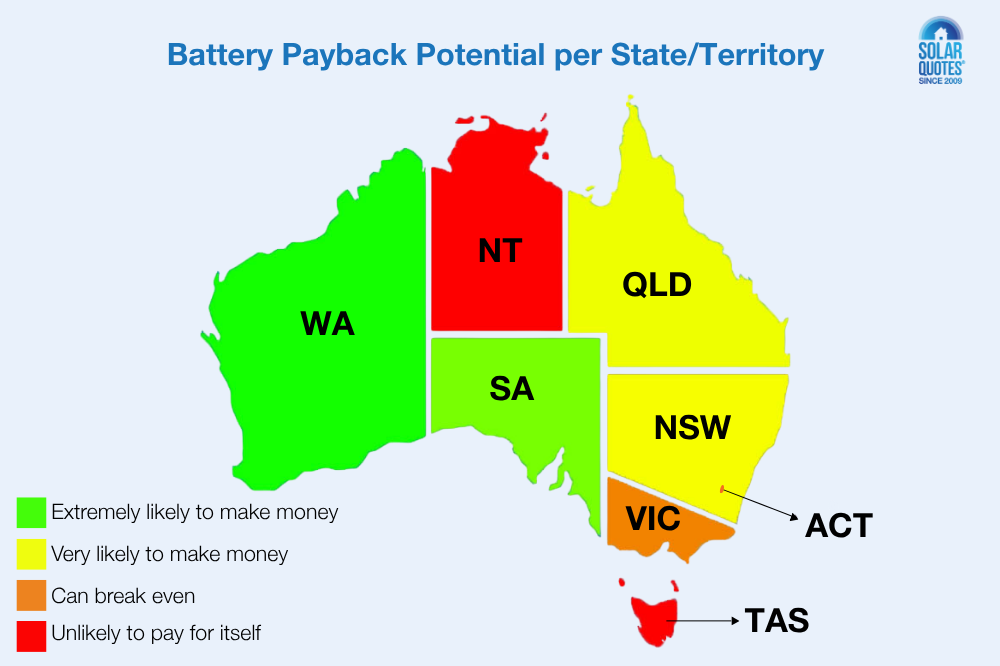
The simple payback time for a home battery depends on where you live, how much electricity you use at night, and whether you qualify for one or more rebates. Thanks to federal and state rebates, payback times have improved dramatically.
If you live in SA, WA, QLD, or NSW, a decent battery can now pay for itself within its warranty period – especially if your overnight electricity consumption is above average. In VIC and ACT, higher electricity use can still make batteries worthwhile, while TAS and NT remain the hardest locations for getting a clear financial return.
For a more detailed analysis of payback periods per state, visit our battery payback page. If you are considering retrofitting a battery and want to know how long it’ll take to pay it off, our Add Battery calculator gives you a detailed payback estimate based on your smart meter data.
Pro-tip: Joining a Virtual Power Plant (VPP) and shopping around for the best electricity tariff can help push payback periods even lower. And if you’re installing a battery alongside a new solar system (i.e. you are Buyer #1), your payback may be even faster due to shared installation costs and inverter savings.
How Much Will Battery Rebates Cover?
Depending on where you live and the size of the battery you install, you may be eligible for multiple incentives. Here’s what that looks like:
Federal Battery Rebate
- Max. $372 per usable kWh in 2025 (expect around $330 after administrative costs)
- Example: A 13.5 kWh battery = up to $5,022
- Decreases slightly each year until 2030.
- VPP-capable battery required, but no need to join a VPP
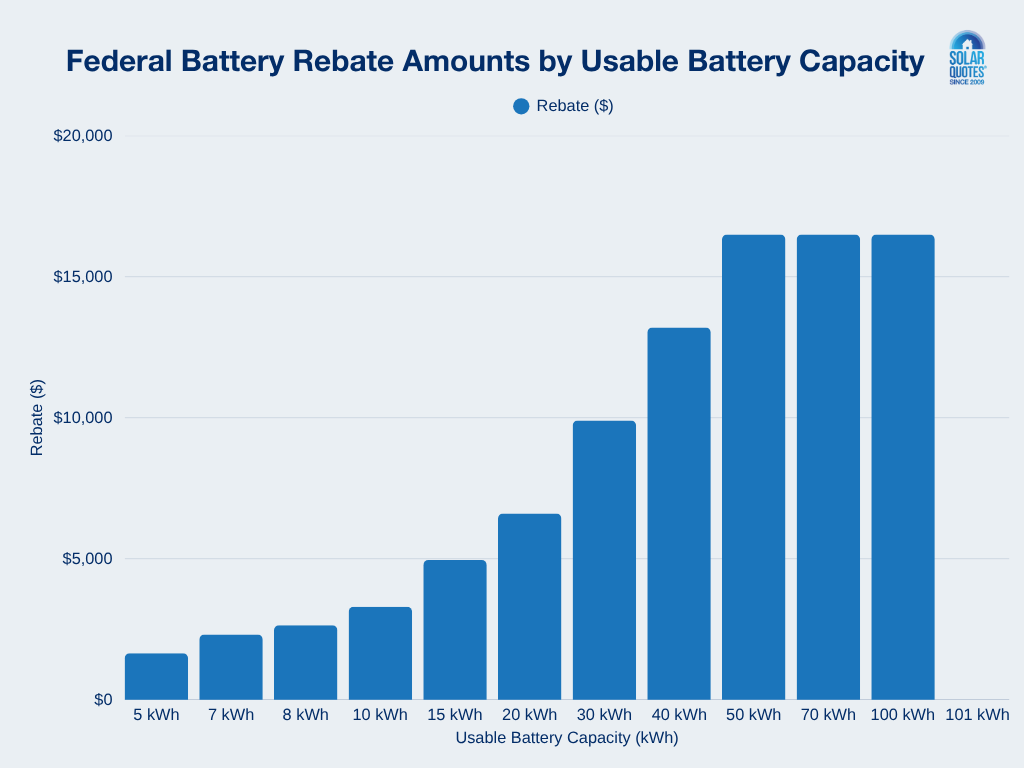
Western Australia Rebate
- Synergy customers (southwest grid): $130 per kWh, up to $1,300
- Horizon Power customers (regional WA): $380 per kWh, up to $3,800
- Stackable with federal rebate
- Must join one of WA’s VPPs
New South Wales (NSW VPP Incentive)
- $40-$55 per usable kWh for joining a VPP
- Up to 28 kWh (= approx. $1,540 VPP incentive)
- Can be combined with the federal rebate
Australian Capital Territory (ACT)
- Zero-interest loan: $2,000 to $15,000 over up to 10 years
- Additional rebates: Up to $5,000 for concession card holders
- Helps reduce upfront cost, though not a direct price reduction
The federal battery rebate is stackable with state rebates. Most other states and territories (QLD, VIC, SA, TAS, NT) currently do not offer their own battery rebates or loans, but residents in these areas are still eligible for the full federal rebate if criteria are met. Here is a summary of what rebates you can stack in your state/territory:
| State / Territory | Rebates Available? | VPP Opportunities | Battery Payback Potential? |
|---|---|---|---|
| Western Australia (WA) | ✅ State + Federal | ✅ Required for state rebate | 💲💲💲💲 |
| South Australia (SA) | ✅ Federal | ✅ Available | 💲💲💲💲 |
| Queensland (QLD) | ✅ Federal | ✅ Available | 💲💲💲 |
| New South Wales (NSW) | ✅ Federal | ✅ Available (with state incentive) | 💲💲💲 |
| Australian Capital Territory (ACT) | ✅ Federal + State (if concession card holder) | ✅ Available | 💲💲 |
| Victoria (VIC) | ✅ Federal | ✅ Available | 💲💲 |
| Tasmania (TAS) | ✅ Federal | ❌ None | 💲 |
| Northern Territory (NT) | ✅ Federal | ❌ None | 💲 |
For a comprehensive breakdown of every available rebate, incentive, and loan scheme across all Australian states and territories, visit our complete battery rebate guide. To decide which VPP suits your needs, check out our VPP comparison table.
What Affects The Battery Price?
Battery Cost Factor #1: Battery Capacity
The energy storage capacity of a battery is measured in kilowatt-hours (kWhs). The higher the capacity, the more kWhs it stores, and the more the solar battery costs.
But there is an economy of scale – the more kWhs you buy, the cheaper the batteries become per kWh. Here are example costs per kWh that include the federal battery rebate, but not state or territory rebates:
| Battery Model | Capacity | Approx. Total Installed Cost (incl. Federal Rebate) | Price per kWh |
|---|---|---|---|
| iStore | 5 kWh | $8,150 | $1,630 |
| iStore | 10 kWh | $10,900 | $1,090 |
| iStore | 15 kWh | $13,550 | $900 |
| Sungrow SBR | 9.6 kWh | $8,330 | $870 |
| Sungrow SBR | 12.8 kWh | $8,980 | $700 |
| Sungrow SBR | 25.6 kWh | $11,250 | $440 |
| SigenStor Single-Phase | 7.8 kWh | $8,000 | $1,026 |
| SigenStor Single-Phase | 15.6 kWh | $10,200 | $654 |
| SigenStor Single-Phase | 31.2 kWh | $16,200 | $519 |
You can see that buying a small 5 kWh battery costs around $1,600 per kWh. This is because you only have 5 kWh to share the entire:
- Battery controller cost
- Battery inverter cost
- Installation cost
Whereas if you buy a 25.6 kWh Sungrow battery, it only costs $440 per kWh. That’s because you only have one battery controller, battery inverter and installation shared amongst all those kWhs. In the case of the Sungrow, this is eight separate 3.2 kWh modules stacked on top of each other. So, the installation of additional modules is fast. Read more about all the benefits of modular batteries.
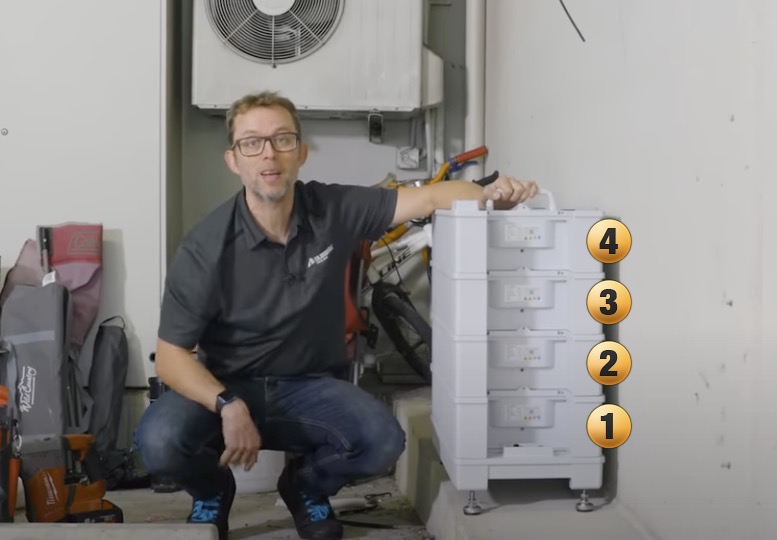
Pro-Tip: Ensure you are quoted usable capacity, not nominal capacity. All kWh figures on this page are usable capacities, which is how much energy the battery can provide when new. Most major battery manufacturers give usable capacity, but many give the higher nominal capacity — so this is something to watch out for. All battery rebates are based on usable capacity.
Battery Cost Factor #2: Warranty
Cheaper batteries generally have shorter warranties. Don’t be fooled – the marketing may claim ‘10 years’ but look deeper, and they can be as short as 13 months if you discharge them ‘too much’.
A good, reasonably-priced battery will generally have a 10-year warranty that allows you to discharge its full usable capacity once per day, or close to it, for ten years with a guarantee of 70% capacity after ten years.
In practice, most home batteries discharge an average of less than their full usable capacity each day. If you’re planning to discharge your battery more than this, you will normally be financially better off installing a larger battery.
What Affects the Battery Inverter Price?
All home batteries need a compatible inverter to charge, discharge, and play nice with the grid. Nowadays, most installers will quote a hybrid inverter for your battery. The inverter can be built into the battery appliance (e.g. Powerwall, SigenStor, AlphaESS) or separate from it (e.g. BYD, Sungrow, Goodwe, iStore).
The inverter’s capabilities directly affect the price of the battery system in 3 ways:
#1 Single- or Three-Phase?
If you want an energy storage solution that charges and discharges across all the phases of a three-phase supply – then your battery inverter must be a three-phase inverter. These cost more than single-phase,
Examples:
- Sungrow 10 kW single-phase hybrid inverter: $3,600
- Sungrow 10 kW three-phase hybrid inverter: $4,500

Pro-Tip: Save on the cost: If you have a 3-phase home, you don’t need a 3-phase battery system. Single phase works fine for most people.
#2 Inverter Power
When pricing a battery, the main factor is its capacity – how much electricity it can store in kilowatt-hours (kWh).
But another specification that affects price is the battery inverter’s power. The input power limits how fast the battery can charge. The output power limits how quickly it can discharge and how much they can back up.
Examples:
- Sungrow 5 kW hybrid inverter: $2,300
- Sungrow 10 kW hybrid inverter: $3,600
The 10 kW inverter can charge and discharge a compatible battery twice as fast for an extra $1,300 and also supports a larger solar system.
Nerd Fact: The difference between energy and power – as it relates to solar batteries: Energy (kWh) is how much electricity is stored for later use. The battery’s power (kW) is how quickly it can charge or discharge that energy. Think of energy as ‘amount of electricity’ and power as ‘speed of electricity’.
#3 Buying solar + batteries + hybrid inverter together
If you are Buyer #1 (i.e. buying solar and batteries at the same time), using a hybrid inverter can reduce your total cost because your solar and battery share one inverter. The savings can be around $1,000 compared to retrofitting energy storage to existing solar.
What Affects Battery Installation Cost?

Installation Cost Factor #1: Backup
Most Australians expect backup with their solar battery system. Backup adds to the hardware and installation cost. The backup function is either built into the battery inverter or a separate ‘backup box’.
Some general rules around the price of solar battery backup.
- The more you want to backup, the more it will cost. Backing up lights, refrigeration and a handful of power points requires a smaller battery than one that can back up a whole house.
- If you have loads with high startup currents on your backup circuits – which can be anything with an electric motor in it such as a refrigerator or air conditioner – it can require expensive high-powered battery inverters such as Selectronic or the one built into a Powerwall 3.
- Backup that can use the solar panels during a blackout to top up your batteries usually costs more than backup that disables your solar power system during a blackout.
- Adding an ‘override’ switch will add about $200 to the price but is worth it if it allows you to still power your house in case of a battery system failure. Ask your installer if this is required for their proposed system – as many installers forget to include one.
Installation Cost Factor #2: Battery Location
Distance from switchboard
Australian Standards mandate where your battery can be located. It is stringent, so you may not have many options. If you can’t or don’t want to install it (including associated electronics) next to your switchboard, your installers will need to run many metres of cables. This can add $1,000 or more to the installation as it can take at least two people and many hours to get a cable across your house.
The following things can also add to your installation cost:
Bollards
If your battery is to go on your garage floor, it will likely need at least one bollard to protect it from errant drivers – like your husband 🤣.
You can save the cost of bollards by mounting it high up the wall where no-one can drive into it.

You can expand Tesla’s Powerwall 3 in two ways:

Remember that stacked expansion means it sticks out further from the wall. If you plan to expand this way, make sure to leave space between the battery and bollards. Alternatively, you can leave space on the side for wall-mounted expansion.
Weather protection
If your battery is installed outside, it should be protected from direct sunlight.
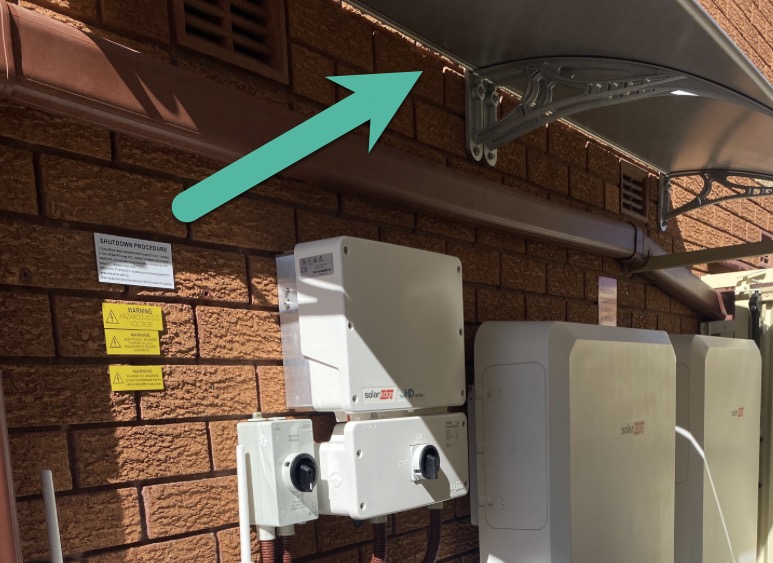
Fire-rated backing
If your battery is mounted on a wall with a habitable room behind, it must have a fire-rated back sheet behind it, adding to the price.

Financing Your Battery Purchase
Cash
Using cash in the bank to buy your battery is not cost-free. You pay an opportunity cost on the missed investment earnings, whether that’s interest or other investment income.
Battery Loans
If you get a regular loan for your battery, your loan provider must itemise the cost of that loan to you. You will pay interest, account-keeping fees and set-up fees.
0% Finance
Be careful of 0% finance. The name implies that it is a cheap or even no-cost loan. That is mostly not true. In my opinion, most 0% finance mobs are full of crap because that ‘0% loan’ is only possible by charging the solar retailer a huge premium – typically 25%. That means a $10,000 battery could have $2,500 of ‘merchant fees’ on top. The finance vendors claim they don’t add to your price, but I hope you can see that for what it is.
Learn more about how Buy Now, Pay Later works, and why new regulations aim to protect solar buyers from getting stung.
Having said that – I know of one 0% finance offer that appears genuine:
Government Battery Loans
Governments sometimes support the purchase of solar batteries by subsidising the cost of financing them. This means you can apply for low or genuine 0% interest loans to pay for some or all of your system.
ACT currently offer 3% loans to eligible households. WA offers zero-interest loans for batteries as part of its WA battery rebate.
Wrapping Up: Solar Battery Prices in Australia
Yes, home batteries are finally worth it for many Australians, especially in states with high electricity prices, good sun, and generous rebates. Thanks to falling prices and the federal battery rebate, thousands of households can now expect payback within the warranty period, particularly if they use a lot of power at night or join a Virtual Power Plant. In summary:
- Price Range: Popular solar batteries have an installed cost between $8,000 and $13,000 including the federal rebate.
- Economy of Scale: Bigger batteries offer a lower cost per kWh.
- Total Cost: The price tag includes the battery, inverter, and installation cost. Finance options can add more.
- Warranty: Really cheap batteries often have awful warranties. Look for a 10-year warranty that will actually last 10 years in use or close to it – small print matters.
- Installation: Distance from the switchboard, 3-phase and backup capabilities can add to the cost.
- Financing: Be wary of hidden costs in 0% finance offers. Government loans offer genuine 0% interest.
Ready to install a solar battery? We can help by connecting you to thoroughly pre-vetted, trustworthy installers who focus on quality:







